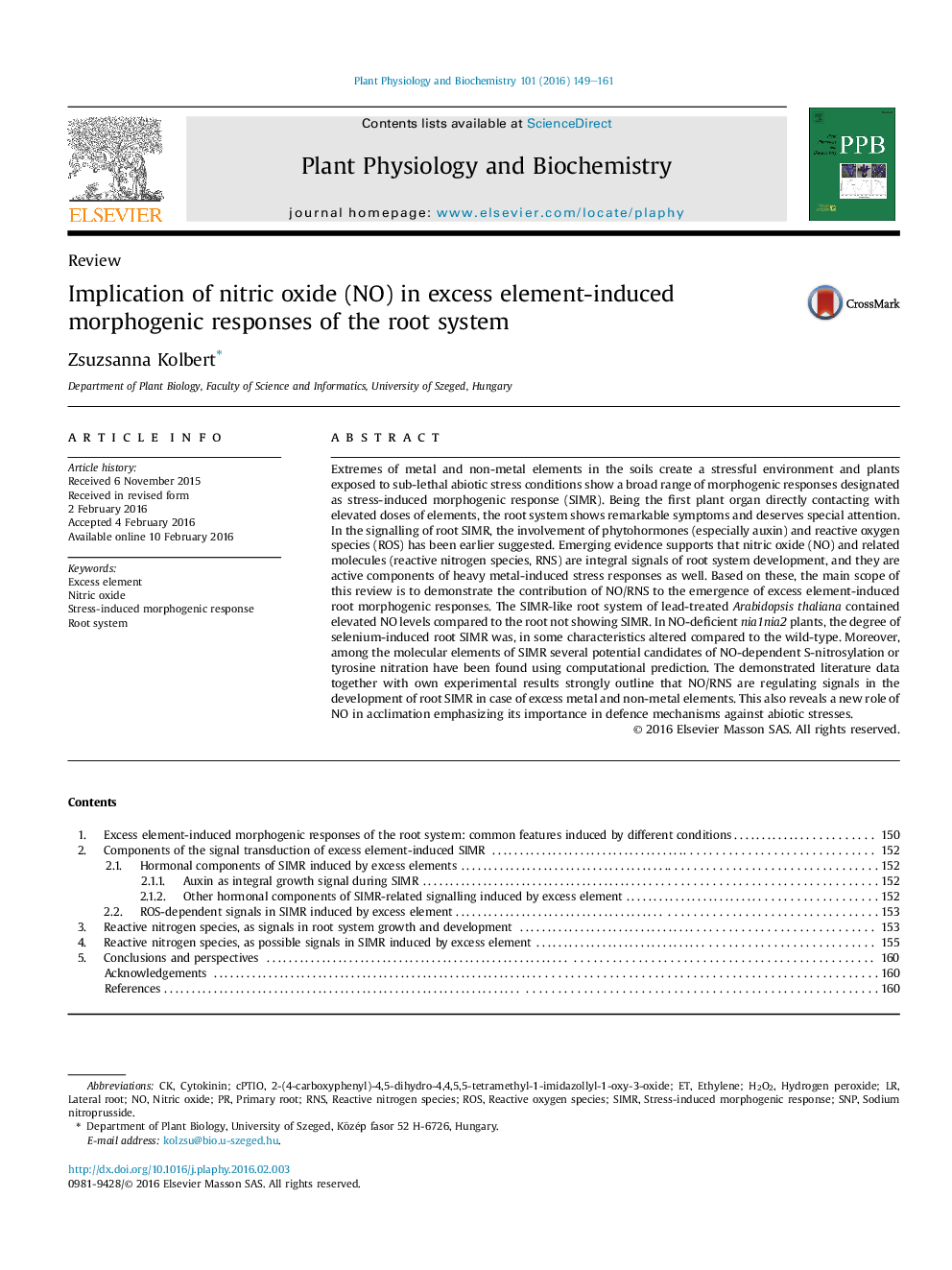| Article ID | Journal | Published Year | Pages | File Type |
|---|---|---|---|---|
| 8354178 | Plant Physiology and Biochemistry | 2016 | 13 Pages |
Abstract
Extremes of metal and non-metal elements in the soils create a stressful environment and plants exposed to sub-lethal abiotic stress conditions show a broad range of morphogenic responses designated as stress-induced morphogenic response (SIMR). Being the first plant organ directly contacting with elevated doses of elements, the root system shows remarkable symptoms and deserves special attention. In the signalling of root SIMR, the involvement of phytohormones (especially auxin) and reactive oxygen species (ROS) has been earlier suggested. Emerging evidence supports that nitric oxide (NO) and related molecules (reactive nitrogen species, RNS) are integral signals of root system development, and they are active components of heavy metal-induced stress responses as well. Based on these, the main scope of this review is to demonstrate the contribution of NO/RNS to the emergence of excess element-induced root morphogenic responses. The SIMR-like root system of lead-treated Arabidopsis thaliana contained elevated NO levels compared to the root not showing SIMR. In NO-deficient nia1nia2 plants, the degree of selenium-induced root SIMR was, in some characteristics altered compared to the wild-type. Moreover, among the molecular elements of SIMR several potential candidates of NO-dependent S-nitrosylation or tyrosine nitration have been found using computational prediction. The demonstrated literature data together with own experimental results strongly outline that NO/RNS are regulating signals in the development of root SIMR in case of excess metal and non-metal elements. This also reveals a new role of NO in acclimation emphasizing its importance in defence mechanisms against abiotic stresses.
Keywords
Related Topics
Life Sciences
Agricultural and Biological Sciences
Plant Science
Authors
Zsuzsanna Kolbert,
